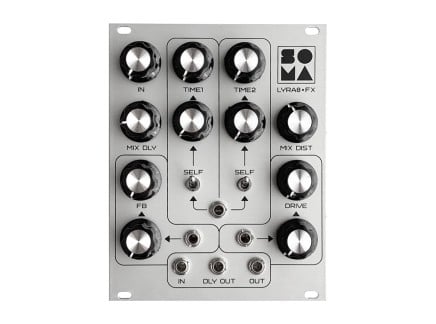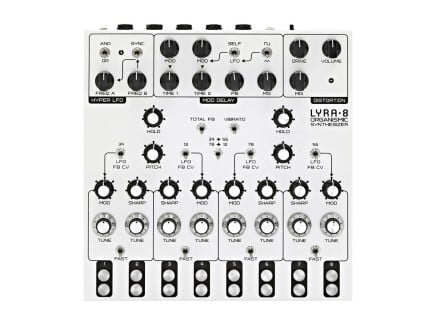Only a couple of years ago, SOMA laboratory, a first Donetsk- then Moscow-based company led by chief-inventor Vlad Kreimer, crashed into the synthesizer world with their instant classic LYRA-8 synthesizer (initially the company produced a 4-voice version of the synth, aptly called LYRA-4). Despite the experimental nature of the instrument and design choices that seemed to subvert acception conventions in the synth market at the time (no MIDI control), the LYRA's uncompromising analog sound, its intuitive interface, unique effects, and modulation sections resonated with all sorts of synth aficionados. It steadily began to appear in the live setups of many performers of electronic music, as well as on the desks of film composers, music producers, and countless hobbyists.
Last year SOMA released a video of the PULSAR-23, a drum machine unlike any other. As it goes with all SOMA instruments, the machine had a glow of mystery around it—and judging by people’s reaction to that video clip, it was evident that the demand for PULSAR-23 would be enormous.
We were curious to learn more about the company, so we reached out to Vlad and he generously agreed to talk to us about his background, ideas, plans, and to provide an overall bigger and clearer picture of SOMA. Welcome to the world of romantic engineering!
The Beginnings
Eldar Tagi: Hi Vlad. Thanks for talking to us. Let’s start with your background. Can you tell us how you got into making electronic instruments? What was the first instrument that you ever built?
Vlad Kreimer: From very early childhood, I had two passions: music and electronics. To that 6-year-old boy, electronic parts seemed like living beings, each with their own consciousness and soul. So, as I was already emotionally attached to electronics, combining it with music was very natural.
The first serious instrument I built was an 8-bit mono sampler. I created it just a few years after the collapse of the Soviet Union. There was no information and I didn't even know that samplers already existed. So I invented one from scratch. It was 1992. I was a young musician with a passion for experiments with new sounds. I even recorded an album using that handmade sampler.
ET: When did you realize that you can make a profession out of that practice?
VK: I realized that I can make my main activity out of this practice when I released the LYRA-8 demo video. I started to receive dozens of orders for a synth that, at that moment, only existed in a DIY home-built version.
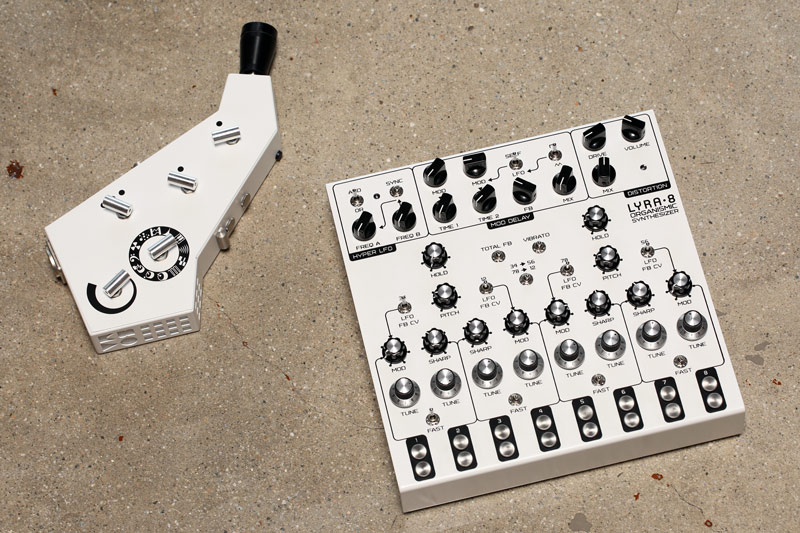 SOMA's Lyra-8 + Pipe side by side
SOMA's Lyra-8 + Pipe side by side
ET: What is your work process like—what does it take to go from the initial idea to a finished product? Are you mostly working alone, or do you have some helping hands around?
VK: For me, creating a new synth is something between a philosophical reflection and an ecstatic dance. Observing the contemporary world, I'm trying to build a happy utopia and proper sound tools for it (or at least tools that are proper enough to help move in this direction).
The sequence is standard: inspiration - representation - sounds - principles - circuitry - prototype - industrial construction. All sound design and circuitry, as well as programming I do alone. During the industrial construction stage, I have good helpers.
ET: SOMA laboratory seems to have a very strong aesthetic and philosophical backbone behind it. What is SOMA to you? Do you differentiate your roles as a musician, and as an instrument builder, or do you see it as one practice? How do you view the company's mission?
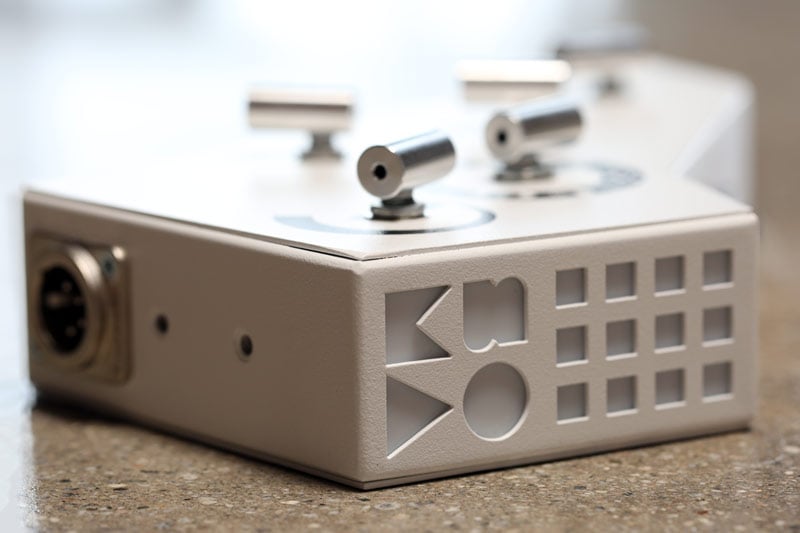 Detail of the SOMA Pipe
Detail of the SOMA Pipe
VK: SOMA for me is a way to speak with the world and with people, a way to bring good people together, to meet like-minded people, and a way to be useful.
The builder and the artist are not divided within me, as they create new synths in deep collaboration. Otherwise, the sound tools would just be dry functional devices without fire and hidden music inside.
SOMA’s mission is to unleash human potential in various kinds of cultural activities. To help our souls speak. To help people connect with themselves and with each other not only by using the same payment systems and social media platforms, but also, as it was said in ancient times—heart-to-heart.
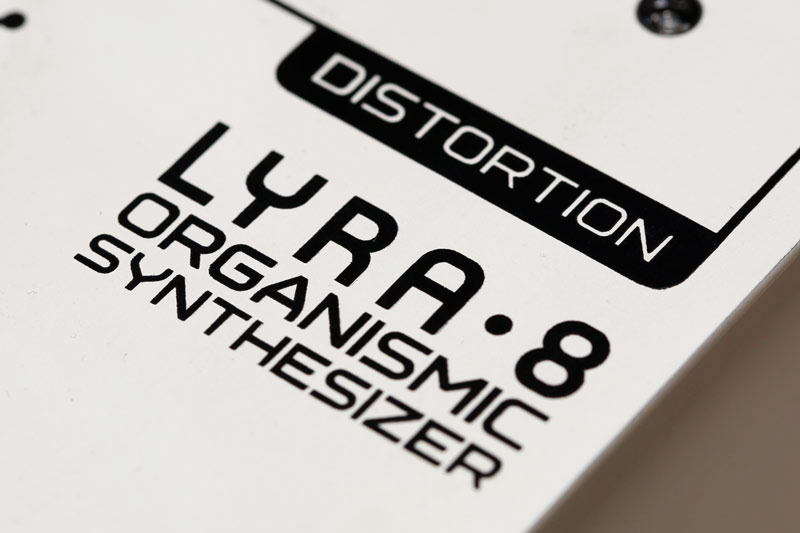
ET: The instruments that you make—all seem to share a very experimental and exploratory nature. Do the ideas come from your own artistic practice, outside influences, or somewhere else?
VK: It is a combination. As an artist, I feel what is missing in the contemporary market of musical equipment, what I need to speak today. I learn a lot from the past, often from abandoned projects like the Trautonium or circuitry of the first electro-organs. I speak with contemporary artists see what's going on around and sniff out the future.
LYRA, PULSAR, and Beyond
ET: Did you ever expect your instruments, particularly LYRA-8, to find such a huge resonance in the music community? What do you think caused it?
VK: No, I didn't expect such resonance. Honestly, I never thought of myself as a builder of new synths. Initially, I only did it for my own performances. I think the reason for such resonance is the strong philosophy behind each instrument and a lot of emotions that flow along with these developments.
ET: Since you’ve posted the first video of PULSAR-23, the excitement it generated in public was immediately obvious. What do you think draws musicians so much to this drum machine?
VK: Several things I think. "It's not 909 or 808 clones finally", "this is a proper sound for contemporary music", "this is something really new", "there are a lot of possibilities", "very cool and fat sound", "this fits perfectly for my live performances" - are some of the comments that I often see under my videos. I think people feel that it is a step forward, and that is actually something we see quite rarely in the world of analog instruments.
ET: The open architecture of PULSAR-23 is different from the rest of your instruments, how did it feel designing an instrument with patch points, and letting the user make major decisions on how the drum machine is wired? What were the challenges?
VK: The challenge was flexibility, as is usually the case when somebody decides to use patch points. This is the only way to create almost endless numbers of variations. And in the case of PULSAR-23, it really proved to be a good decision. On the one hand, it allows the panel to not be overcomplicated, and on the other hand, it offers a lot of possibilities.
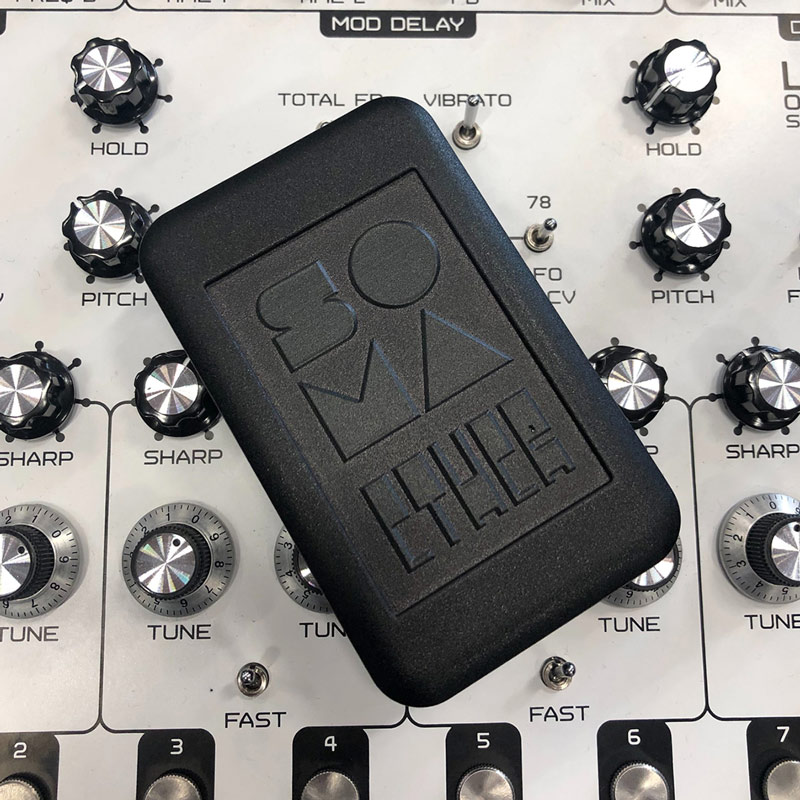 The SOMA Ether anti-radio
The SOMA Ether anti-radio
ET: Now that the release of ETHER is on the horizon, what were the most surprising and interesting sound sources that you’ve discovered with it?
VK: ETHER has already been released several months ago, but up to this moment, we were only fulfilling sales from a very long waiting list. Soon ETHER will be available through our partner shops. Of course, Perfect Circuit will have it ASAP as it is our main partner in the US.
I found a lot of sounds with ETHER that really shocked me! Among them is the suburban train that drives to my place. I'm even going to make an album using only the train and ETHER. Some absolutely ordinary grey places produce incredible sounds and I can't even pinpoint what is the actual source. It can be complex fat basslines, symphonic drones, surrealistic beats and so on. The most unexpected aspect of it is the complexity and fatness of the sounds. Since discovering those sounds, I have been thinking a lot about how I can achieve such rich sounds with synths and, I have to say, this is a big challenge! The ETHER established a very high level of quality for some aspects of sound for me and it pushed me to think about new ways of synthesis.
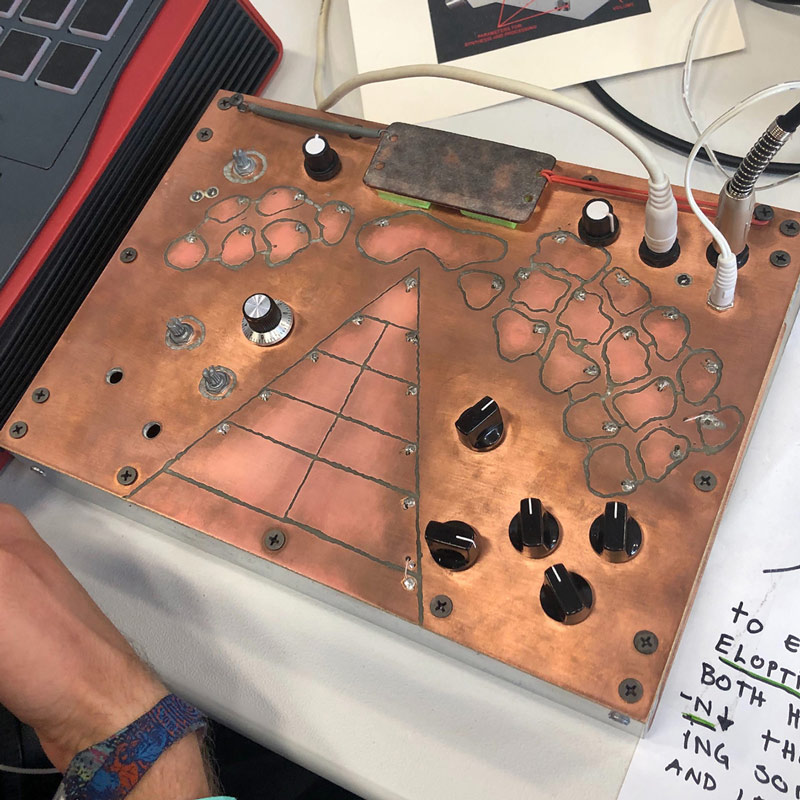 The SOMA Enner prototype at Superbooth 2019
The SOMA Enner prototype at Superbooth 2019
ET: Can you talk about your collaboration with Sistor on the ENNER instrument? Who initiated the project, and what is the current status of it?
VK: The project was initiated by me, although the inspiration came from Sistor. I heard her performance on Lyra-8 and came to the conclusion that Lyra was not enough :) I felt that such artists as Sistor need tools that are even more expressive, more flexible. Then some design ideas came to me and I decided to propose to do the prototyping together. It was a nice dialogue and we both felt quite happy with the result.
ET: I haven’t heard any updates on the DVINA project, which seems to lean much more on the electro-acoustic side than any of your other instruments. Is the project going to be realized?
VK: Yes, it will be. As usual, things go slower than we want but they move in the right direction. We did a lot of work: we’ve developed a new design for DVINA where the step-up transformer is built into the instrument’s body, as well as some other improvements. At this point, it is a complete instrument ready to be connected to a standard guitar processing chain or similar equipment. We made some important changes to the way DVINA looks as well. Now it is more beautiful, although we preserved the key minimalistic principle. Additionally, it will come with a soft and sturdy case. I hope within a month we will show the results and reveal the final price.
Plans and Inspirations
ET: So far, it seems that all of your instruments are purely analog. Do you have plans on making anything in the digital realm?
VK: Yes. It opens a lot of cool perspectives. For me, the most important part is to find my own way in the digital realm. I don't like some principles of digital design that are commonly accepted in modern synths. So now I'm working little by little on my own methods of digital synthesis and resolving such fundamental problems as aliasing. Some solutions are already found and I'm happy with it. So in the future, we will release some digital synth; of course, as expected with any SOMA instrument, it will be strange and limitless.
ET: If you were to collaborate with another instrument designer (dead or alive), who would that be and why?
VK: It could be either Léon Theremin, Rob Hordijk or Folktek. I feel these designers and I are like-minded.
ET: Out of all the instruments that you’ve created so far, which one is your favorite?
VK: All babies are lovely. :) No special preferences.
ET: An “impossible” instrument question: is there an instrument/device that you would like to create, but for one reason or another it is just not feasible to be realized at present?
VK: Yes, of course. And this is the main magnet that pulls SOMA forward. Let's say this is an instrument, with a way of playing that is much closer to human's natural expression of emotions than it is to manipulation of technical parameters. I would like to create an instrument that will act as a kind of sensitive living being, and all SOMA products will seem to be steps towards that goal.





